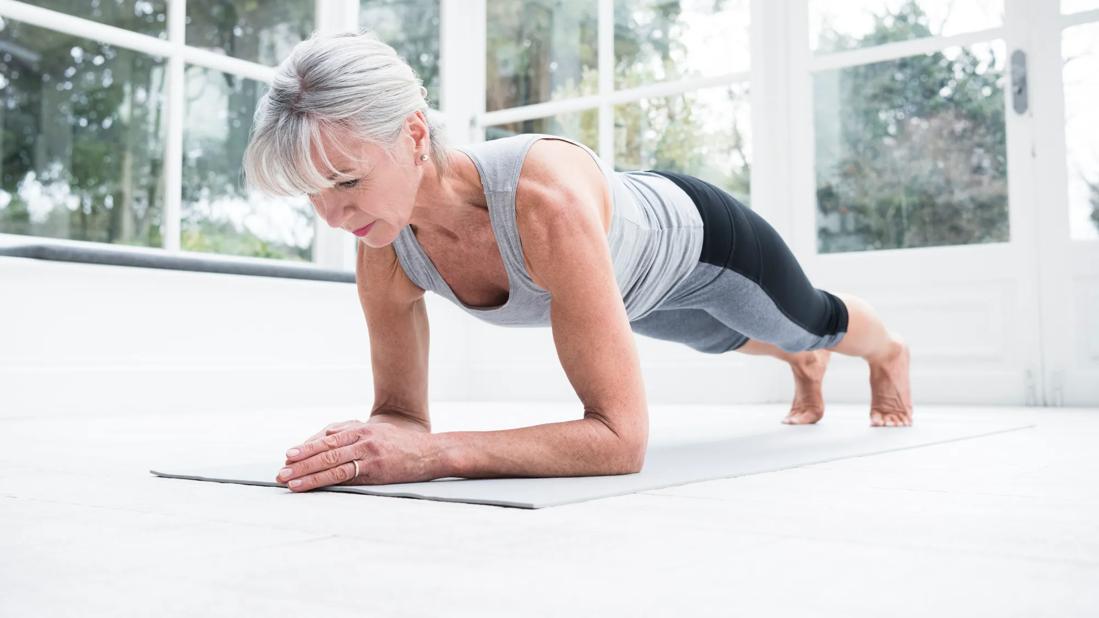This calisthenics workout allows you to use your own body weight to build muscle and burn calories

Exercise can feel like a daunting task if you’re just getting started — from the kinds of exercises you need to do to the long-term schedule that will help you lose weight and build muscle, it can seem like a lot.
Advertisement
Cleveland Clinic is a non-profit academic medical center. Advertising on our site helps support our mission. We do not endorse non-Cleveland Clinic products or services. Policy
But in reality, you don’t need a fancy gym or the latest and greatest workout gear to make the most out of physical fitness. Calisthenics focuses entirely on using your own body weight for resistance so you can improve your strength, flexibility, endurance and coordination without all so-called the bells and whistles.
Sports medicine physician Michael Dakkak, DO, breaks down how calisthenics works and offers up a single routine to get you started.
Calisthenics is a type of resistance training that relies entirely on your own body weight to perform full-body exercises with little to no equipment. In a way, calisthenics combines strength training with a heart-pumping cardiovascular workout. By working on calisthenics consistently, you can build up your endurance and build muscle over longer periods.
At-home calisthenics are perfect if you’re just starting a fitness routine or resuming physical activity, especially given that there’s a very low risk of injury, says Dr. Dakkak. But don’t be fooled by the simplicity of these exercises. They can be scaled up to create an excellent workout for seasoned gym-goers and all types of athletes, too.
“You can change the exercises to make them as ‘easy’ or challenging as your strength allows,” he adds.
Advertisement
To help get you started, here is a full-body calisthenics workout routine. To begin, you’ll want to try to do all of the following exercises at least once, with 30 to 45 seconds between each set. Once you get the hang of it, feel free to repeat the entire routine again, with a couple minutes of rest in between each round.
“Beginners might start with three sets of five reps of each exercise, while others might do three sets of 15 reps,” suggests Dr. Dakkak. “Aim for two to four days of strength training per week, with a day of rest in between the sessions to give your muscles time to repair and get stronger.”
As you’re exercising, pay attention to the way your body responds to the movements you’re doing. If you experience pain, stop doing the exercise. If you’re unsure of how something should feel during an exercise or you’re wondering about how to perfect your form and technique, a physical therapist or athletic trainer can help you.
Planks strengthen the core muscles that support your abdomen, spine and hips. A strong core can lower your risk of back pain and other problems.
Lunges work the muscles in your butt and hips (“glutes”), thighs (quadriceps and hamstrings) and abdominals.
Squats work your entire lower body from your abs down, including your calf muscles and shins.
Advertisement
Push-ups work the upper body muscles in your arms (biceps), chest (pectorals) and shoulder muscles.
Burpees work your muscles from head to toe, incorporating different types of calisthenics exercises like squats, planks and push-ups in one flowing series. In addition to building muscle, burpees get your heart rate up to provide a great cardio workout.
Advertisement
One of the largest benefits of calisthenics is that you don’t need a well-equipped home gym or a bunch of machines in a pay-to-play workout studio to do these exercises. The only things you need are your body, time and enough space to move freely without risk of injury.
Once you get into calisthenics, there are other benefits, too, including:
Advertisement
Calisthenics exercises are an excellent way to start your fitness journey or even switch up an existing workout routine. And as you can do calisthenics at home without equipment, you can say goodbye to a sedentary lifestyle and hello to a healthier heart and toned muscles.
Learn more about our editorial process.
Advertisement

You can improve your athletic performance over time by breaking up your workout regimen into focused cycles

Lower-intensity workouts can deliver high-quality health and fitness results

Incremental changes in your exercise routine can improve your strength and endurance over time

Understanding heart rate zones can help you tailor your workout to reach your goals

Increase the size of your muscles by bulking up on protein and focusing on slow, intense movements with progressive overloading

Low-impact exercises help you recover faster between sets, during cool downs and on rest days

Eccentric is slow and steady, while concentric is fast and controlled

Weightlifting can help you build muscle mass, reduce joint pain and increase flexibility to improve your quality of life

Start having sex about 72 hours before ovulation, then at least every other day during your fertile window

Attachment theory suggests that your earliest relationships shape connections throughout your life

It isn’t a recognized mental health disorder, but research shows that problematic social media use can negatively affect your mental health, self-esteem and sleep